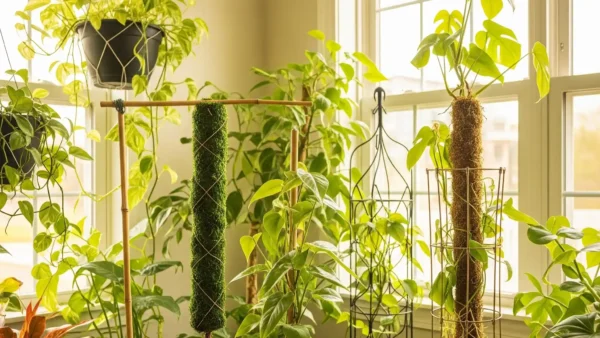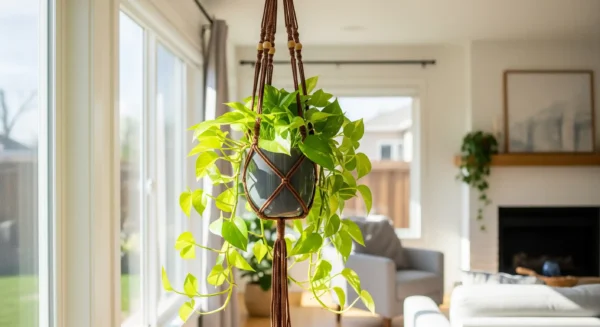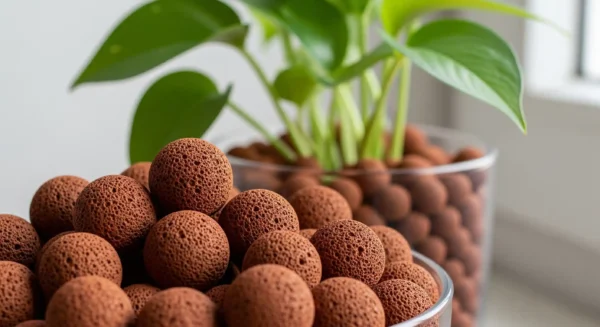Mastering Pot Problems: How to Identify and Fix Root Bound Problems
Whether you are caring for a few cherished houseplants on a windowsill or a vast backyard paradise, your experience will be one of happiness and, to be honest, some annoyance. We’ve all been there, right? Fighting annoying slugs, questioning why that new plant appears sad all of a sudden, or drowning in the ocean of contradictory internet advice. It’s all part of the journey!
Especially for those of us growing plants in containers, one recurring difficulty is a sneaky problem that can seriously hinder our green friends: becoming “root bound.”
You know, the reason I really wanted to explore this subject was an intense debate I came across on Reddit. Along with many others, user AndyWarwheels was sharing experiences about the typical challenges gardeners encounter, especially with potted plants. And guess what kept showing up? Yes, root bound problems were underlined as a significant annoyance for container gardeners. It really resonated since, as AndyWarwheels noted, you see images all the time of plants obviously struggling as their roots have run out of space.
So, what precisely is “root bound”? How can you know whether your plant is affected by it? What makes it truly an issue? Most crucially, what can you do regarding it? This article aims to assist! Drawing on shared knowledge and experiences from fellow plant lovers, we will investigate the tell-tale indicators, reveal the causes, and guide you through the easy actions to correct and even avoid this frequent “pot problem.” Ready to enable your potted plants to breathe comfortably? Let’s get started!
What Exactly Does “Root Bound” Mean?
Alright, let’s get back to fundamentals. You hear the phrase bandied about, but what does it actually mean when we say a plant is root bound (sometimes known as pot bound)?
Simply put, it means the roots of the plant have entirely occupied the available space within their container. Imagine living in a house where every room, closet, and corner has been progressively filled; there is simply no more room to expand out.
The roots in the pot strike the sides of the container and have nowhere else to go instead of going outwards into new soil looking for moisture and nutrients. So, what do they do then? Often creating a thick, twisted mat, they begin circling around the inside of the pot.
You may now ask, “Is that really so terrible?” Regrettably, yes, it could be very harmful for the health of your plant. Severely tangled and compacted roots can practically begin to choke themselves. Even if you are watering and feeding correctly, this thick mass makes it very hard for the plant to efficiently absorb water and vital nutrients. The product? Often, your plant’s health will show stunted growth, a general lack of vigor, and an overall decline. Not perfect, it’s like trying to survive when you’re feeling totally squeezed and limited.
What Causes Plants to Become Root Bound, Then?
It appears to be a typical issue, so what brings it about? What causes our happy potted plants to finally find themselves in this tangle? Usually, it comes down to a few simple things:
- Natural Development: Really, it’s just basic biology! Healthy plants grow; as the top portion of the plant grows, its root system spreads below to support it. Roots have to be free to explore, anchor the plant, and look for nutrients and water. A plant’s roots will eventually fill the whole volume if it remains in the same container forever reaching the borders.
- The Size of the Container: Sometimes the pot was simply too tiny to start with, or maybe the plant is a very fast grower. Consider robust plants like monsteras or several varieties of ferns; their roots can fill a pot far more quickly than, for example, a slow-growing cactus or snake plant. A pot that doesn’t provide enough space for the natural growth rate of the plant will become root bound sooner rather than later.
- Merely Time: Though starting with the ideal pot size, becoming root bound is usually just a natural result of time. Over months or years, a plant’s root system naturally grows more complex and larger. Eventually, even in a reasonably sized pot, a healthy, mature plant will most certainly use all the available space. While it also indicates the plant is ready for a move, it is a sign it has been growing well.
Becoming root bound, therefore, is not always an indication that you have done anything incorrect; rather, it is usually an indication that your plant is growing and requires more space to keep flourishing! The secret is knowing when it’s occurring.
How to Spot a Root Bound Plant: Reading the Signs
We know why it happens, but how can you know whether your plant is really sending out an S.O.S. from its limited space? Fortunately, plants often provide us some fairly obvious hints. Watch out for these typical signs:
- Roots Trying to Break Free: This is usually the clearest indication! Look at the pot’s bottom. Do you notice roots sticking out of the drainage holes? Perhaps even rising over the top border of the soil? That’s a typical indication they have run out of space down below and are frantically looking for new land.
- Water Problems: Water your plants with care. Does the water appear to rush almost immediately through the pot and out the bottom, without really soaking in? The pot is so full of roots that there is almost no soil left to retain moisture, which can cause that. On the other hand, occasionally the root ball gets so thick and compacted that it really pushes water away, causing the soil to remain obstinately dry even following irrigation.
- Increased Watering Frequency: Related to the water problem, you could discover that you have to water the plant far more often than you formerly did. Should the soil appear to dry out very fast, it may be because the root mass is consuming most of the pot volume, leaving little soil to hold moisture.
- Development Grinds to a Stop: Have you seen your plant simply… stopped growing? Its growth could also be significantly slower, perhaps. It could be because its stunted roots can’t reach enough water and nutrients to sustain new growth if it’s not producing new leaves or growing taller (during its normal growing season, of course).
- Looking Lackluster: Occasionally, the plant just appears generally unhappy or weak. Though you believe you’re providing enough light, water, and fertilizer, it may seem small or lacking vigor. It simply lacks that good radiance.
- Yellowing Leaves: While yellowing leaves might indicate many problems—such as overwatering or nutrient deficit—sometimes yellowing that begins on the lower, older leaves can indicate the plant is root bound and fighting to pull up enough resources to sustain all its foliage.
- The Ultimate Check: Gently sliding a plant out of its pot will help you to absolutely confirm whether it is root bound. What do you observe? Should you come across a thick cluster of roots tightly wrapping around the interior form of the pot, usually with very little loose dirt apparent, you most certainly have a root bound plant!
Community Agreement: Don’t just believe me! Experienced gardeners, as user AndyWarwheels noted in that Reddit thread, often see it: “I see it all the time on this sub people posting photos of their plants that are so obviously root bound”. We all learn to identify this typical difficulty.
Watch out for these indicators, particularly in plants you have kept in the same pot for a year or more. Finding the issue early helps to solve it quite a lot!
What Causes Plants to Become Root Bound, Then?
It appears to be a typical issue, so what brings it about? What causes our happy potted plants to finally find themselves in this tangle? Usually, it comes down to a few simple things:
- Natural Development: Really, it’s just basic biology! Healthy plants grow; as the top portion of the plant grows, its root system spreads below to support it. Roots have to be free to explore, anchor the plant, and look for nutrients and water. A plant’s roots will eventually fill the whole volume if it remains in the same container forever reaching the borders.
- The Size of the Container: Sometimes the pot was simply too tiny to start with, or maybe the plant is a very fast grower. Consider robust plants like monsteras or several varieties of ferns; their roots can fill a pot far more quickly than, for example, a slow-growing cactus or snake plant. A pot that doesn’t provide enough space for the natural growth rate of the plant will become root bound sooner rather than later.
- Merely Time: Though starting with the ideal pot size, becoming root bound is usually just a natural result of time. Over months or years, a plant’s root system naturally grows more complex and larger. Eventually, even in a reasonably sized pot, a healthy, mature plant will most certainly use all the available space. While it also indicates the plant is ready for a move, it is a sign it has been growing well.
Becoming root bound, therefore, is not always an indication that you have done anything incorrect; rather, it is usually an indication that your plant is growing and requires more space to keep flourishing! The secret is knowing when it’s occurring.
How to Spot a Root Bound Plant: Reading the Signs
We know why it happens, but how can you know whether your plant is really sending out an S.O.S. from its limited space? Fortunately, plants often provide us some fairly obvious hints. Watch out for these typical signs:
- Roots Trying to Break Free: This is usually the clearest indication! Look at the pot’s bottom. Do you notice roots sticking out of the drainage holes? Perhaps even rising over the top border of the soil? That’s a typical indication they have run out of space down below and are frantically looking for new land.
- Water Problems: Water your plants with care. Does the water appear to rush almost immediately through the pot and out the bottom, without really soaking in? The pot is so full of roots that there is almost no soil left to retain moisture, which can cause that. On the other hand, occasionally the root ball gets so thick and compacted that it really pushes water away, causing the soil to remain obstinately dry even following irrigation.
- Increased Watering Frequency: Related to the water problem, you could discover that you have to water the plant far more often than you formerly did. Should the soil appear to dry out very fast, it may be because the root mass is consuming most of the pot volume, leaving little soil to hold moisture.
- Development Grinds to a Stop: Have you seen your plant simply… stopped growing? Its growth could also be significantly slower, perhaps. It could be because its stunted roots can’t reach enough water and nutrients to sustain new growth if it’s not producing new leaves or growing taller (during its normal growing season, of course).
- Looking Lackluster: Occasionally, the plant just appears generally unhappy or weak. Though you believe you’re providing enough light, water, and fertilizer, it may seem small or lacking vigor. It simply lacks that good radiance.
- Yellowing Leaves: While yellowing leaves might indicate many problems—such as overwatering or nutrient deficit—sometimes yellowing that begins on the lower, older leaves can indicate the plant is root bound and fighting to pull up enough resources to sustain all its foliage.
- The Ultimate Check: Gently sliding a plant out of its pot will help you to absolutely confirm whether it is root bound. What do you observe? Should you come across a thick cluster of roots tightly wrapping around the interior form of the pot, usually with very little loose dirt apparent, you most certainly have a root bound plant!
Community Agreement: Don’t just believe me! Experienced gardeners, as user AndyWarwheels noted in that Reddit thread, often see it: “I see it all the time on this sub people posting photos of their plants that are so obviously root bound”. We all learn to identify this typical difficulty.
Watch out for these indicators, particularly in plants you have kept in the same pot for a year or more. Finding the issue early helps to solve it quite a lot!
Do Tools or Techniques Exist to Identify Root Bound Problems?
Wouldn’t it be wonderful if a unique device or magic wand could immediately inform us when a plant has to be repotted? Although we are not quite there yet, there are surely methods to verify and some fascinating concepts circulating among gardeners.
- Old-Fashioned (Still the Best!): Honestly, the most dependable and easiest approach is still the conventional check: carefully tip the pot on its side, gently grasp the base of the plant, and try to slide the whole root ball out of the container. This lets you see the root system directly. Is it a solid mass of circling root systems? Then you are certain. Doing this gently often doesn’t hurt the plant, so don’t worry.
- Transparent Solution: Many gardeners find it useful to plant in clear or translucent plastic nursery pots. Although perhaps not the most attractive choice by itself, these clear pots let you see root growth along the sides without disturbing the plant by pulling it out. You can actually see when the roots start circling and hitting the borders.
- Clever Pot Ideas (Community Brainstorming): That Reddit thread really got people thinking creatively! User AndyWarwheels suggested a pot made with a transparent area or small window especially for root inspection. Although some said that roots often shun light and that plants might not get root bound so fast as to require continual observation, AndyWarwheels argued that such a feature could be very useful for new or inexperienced gardeners who might not even consider inspecting the root system otherwise. A fascinating idea meant to increase visibility of concealed issues!
- Related “Smart Pot” Technology: Although not intended particularly for spotting root bound problems, the overall desire in enhancing container gardening is clear in other concepts talked online, such pots with built-in soil moisture sensors or pots made of color-changing materials to show soil moisture levels. These developments indicate that gardeners surely want technology to assist remove some of the uncertainty from typical pot-related plant care issues.
That soft slide-out check still serves as the gold standard for verifying whether your plant requires more root space. But who knows what smart pot designs the future could bring?
Resolving Root Bound Problems: Time for a New House! The Solution
Alright, you’ve done your detective work, perhaps even removed the plant from its pot, and verified it: your plant is absolutely root bound. Stay calm! This issue can be resolved. The main and most efficient approach is straightforward: repot your plant into a larger container, therefore providing it a larger home.
Imagine it as relocating from a small studio apartment to a location with an additional bedroom—at last, space to spread out! Here is a simple approach to handle the repotting process:
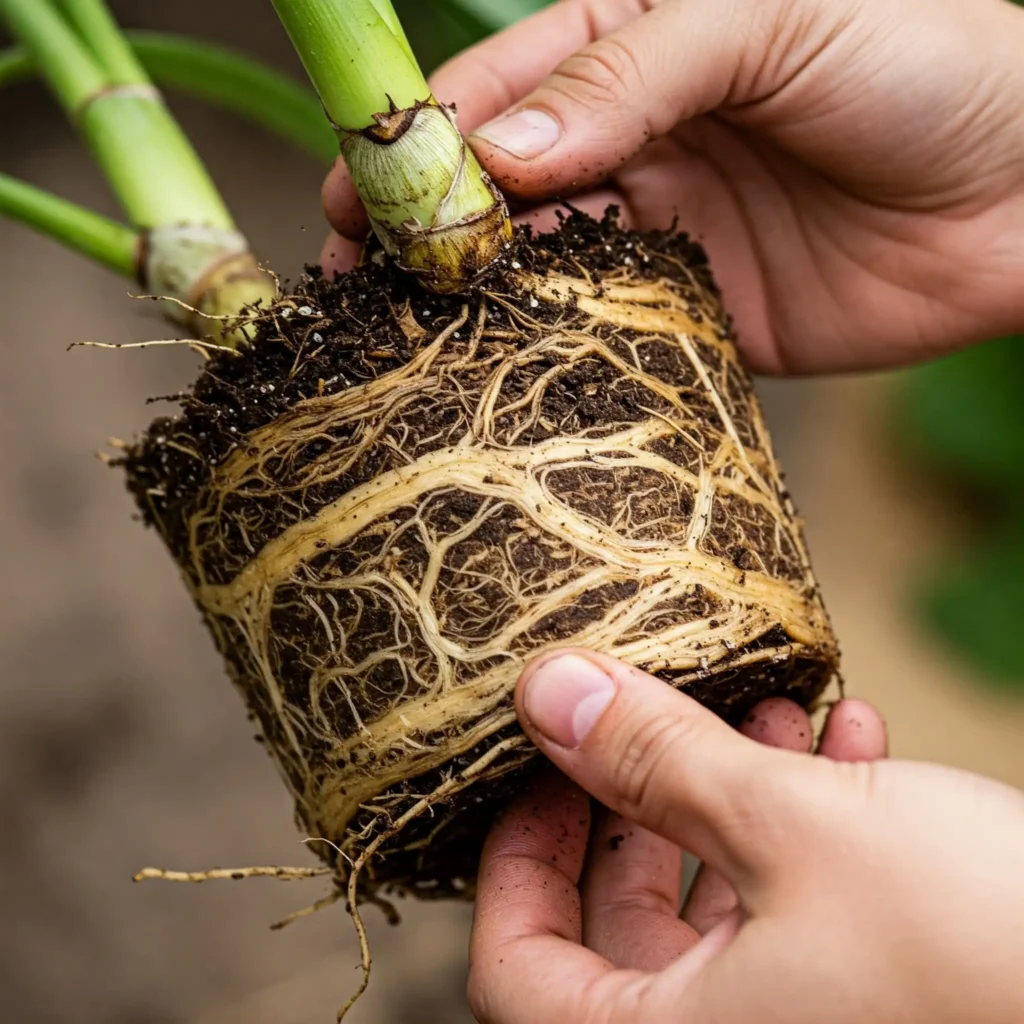
- Gently Evict: Remove the plant from its present pot with care. Try tapping the bottom of the pot hard or gently running a butter knife or trowel around the inside edge to loosen things up if it’s quite stuck. Try not to pull the plant out by its stem.
- Look over the roots and loosen them. Examine that root ball. Are the roots closely coiled in circles? You should urge them to expand outwards into the new soil if so. With your fingers, gently tease apart the circling roots. Breaking a few fine roots is not a cause for concern; it’s preferable than keeping them tight. You might have to be a little more forceful if the roots are very thick and matted: use a knife or clean, sharp pruners to make a few vertical cuts—about 3-4—down the sides of the root ball, just slicing an inch or so deep. Though it may seem severe, it really signals the roots to investigate the new area and disrupt the circling pattern.
- Pick the New Digs: Choose a new pot one size larger. Usually, this means selecting one that is roughly 1-2 inches (about 2-5 cm) wider in diameter than the previous pot. Don’t give in to the urge to plant a tiny plant in a large pot! Excessive extra dirt surrounding a tiny root ball can remain wet for too long, therefore raising the possibility of root rot. Usually, a slow growth in size is preferable. Ensure the fresh pot has drainage holes!
- Get the New Pot ready. To the base of the new container, add a layer of fresh, good-quality potting mix suitable for your particular plant kind.
- Settle in: Put the plant into the new pot. Change the soil level at the bottom so the top of the plant’s original root ball sits roughly an inch (2.5 cm) below the edge of the new pot. You don’t want to bury the stem deeper than it was first.
- Fill ‘Er Up: Fill the area surrounding the root ball with extra fresh potting mix. But don’t pack it really tight; roots need air as well; gently press the soil down with your fingers to remove big air pockets.
- Water Well: Water the newly repotted plant well. This offers much-needed moisture following the disturbance and helps to settle the soil around the roots. Let extra water to completely drain out.
Myth Busting! But Don’t Plants Enjoy Being Root Bound?
Some folks could tell you that some plants, such snake plants or spider plants, really “prefer” being somewhat root bound to bloom or generate offsets. Although some plants may tolerate tight circumstances better than others or even bloom under minor stress, the notion that most plants flourish when extremely root bound is mostly a fallacy.
Recall that Reddit thread: user Lovely_bones620 recounted a very relatable event, saying their spider plant really “stopped growing when it was just a little bit root bound” and only began producing new growth and babies again after being transferred to a larger pot. Long-term health, vitality, and ongoing development of most plants depend absolutely on sufficient space for their roots to grow, breathe, and access water and nutrients. Don’t let fear of repotting keep your plants trapped in small spaces!
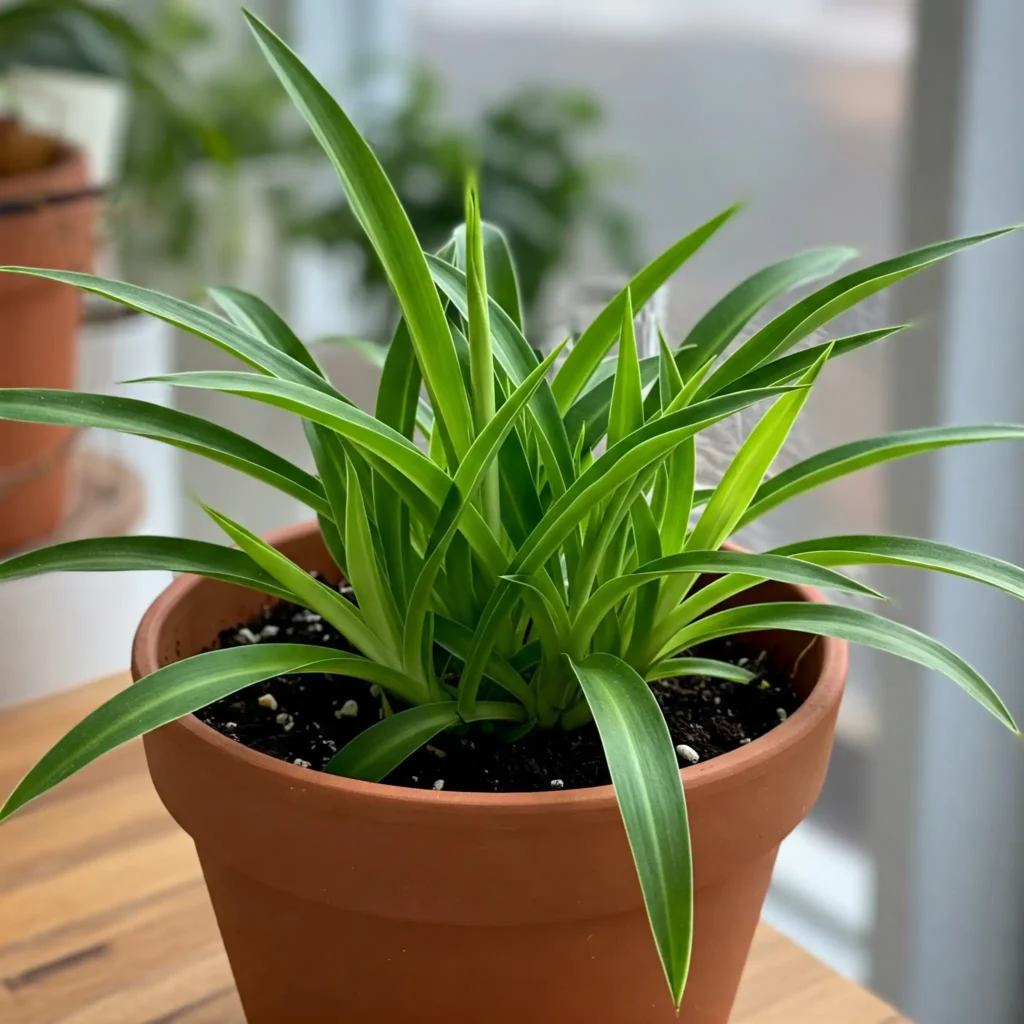
Avoiding Root Bound Problems: Staying Ahead of the Game
Although repotting solves the issue once it arises, wouldn’t it be wonderful to prevent your plants from becoming extremely root-bound in the first place? Being proactive will help your plants to be more happy and help to lower the strain of urgent repotting. Here are some suggestions to help avoid this frequent problem:
- Plan Consistent Check-Ups: Especially during their active growth season, make it a practice to regularly check your potted plants. How frequently? It depends on the plant (more on that below!), but perhaps once a year for slower growers or every 6 months for faster ones. Your best friend here is that soft slide-out-of-the-pot technique we discussed. Roots beginning to circle or fill the pot indicate it’s time—or close time—for an upgrade.
- Pot Up Gradually: Choose a pot that is suitable for its present root system, not quite too big, when you first acquire a plant or repot one. Then, usually one that’s only 1-2 inches (2-5 cm) wider in diameter, move it up to the next pot size as the plant grows. Jumping significantly in pot size might cause issues with too wet remaining excess soil. Imagine it as providing your plant only enough new space to promote good growth without stressing it.
- Understand Your Plant’s Speed: Every plant has a different growth rate. Fast-growing plants—like many tropical foliage plants, tomatoes in containers, etc.—will naturally fill their pots with roots much quicker than slow growers—like succulents, cacti, ZZ plants, or snake plants. Understand how fast your particular plants tend to grow and change your root inspection frequency accordingly. While slow growers might be content in the same pot for many years, fast growers may require annual checks and repotting.
- Container Life Differs: Keep in mind that container life differs. Plants in pots have different experiences than those in the earth. Especially dark-colored plastic or terracotta pots in the sun, pots can heat up considerably, stressing the roots. Their volume of soil to retain moisture is also far more constrained. Knowing these container constraints helps you realize why their ongoing health depends on offering fresh soil and sufficient root space by timely repotting.
- Consider Healthy Growth: Are you feeding your plant well during the growing season? Great! Keep in mind that both above and below the soil, appropriate nutrition usually results in more robust growth. While this is positive, it also suggests that a well-fed, healthy plant will probably outgrow its pot more quickly and need repotting sooner than one that is merely coasting along. Healthy growth is growing roots needing more space!
Keeping your container plants growing strong and looking their best often depends on being observant and proactive with these straightforward techniques, which helps you to catch possible root bound concerns before they turn major issues.
Happy Roots, Happy Plants!
That is all there is! One of those timeless plant issues that almost every container gardener runs into eventually is being root bound. It’s just what happens when a healthy plant’s roots outgrow their pot. The good news is, it’s usually easy to spot if you know the signs: consider roots escaping the drainage holes, water rushing straight through, stunted growth, or that tell-tale tightly wound root ball.
Fortunately, the solution is easy: repotting into a marginally bigger container provides those roots the breathing space they urgently require. Staying proactive—doing regular checks, understanding your plant’s growth habits, and potting up progressively—helps you to sometimes stop the issue from getting serious in the first place.
Maybe the most important lesson, repeated in online gardening forums, is that facing obstacles like this is all part of the gardening path. Be not disheartened! We all develop as gardeners by learning to watch our plants, spot problems like a root bound root system, and experiment with remedies. Sometimes, as many others have said, it takes some trial and error to determine what your particular indoor plants or container gardening arrangement requires instead of merely following a generic guide.
Understanding the indicators of root bound problems and acting quickly helps you not only fix one of the most frequent pot problems but also enable your plants to really flourish. Happy roots result in happy, healthy plants; after all, isn’t that our goal? Keep growing, keep learning, and keep watching!
FAQ: Your Root Bound Questions Answered
How do you fix root-bound plants?
The main solution is to repot the plant into a container that is slightly larger (about 1-2 inches wider). When repotting, gently loosen the tightly circled roots with your fingers. If the roots are severely matted, you may need to make a few shallow vertical cuts on the sides of the root ball with clean pruners or a knife to encourage outward growth into the new soil.
How do you know if a plant is root-bound?
Look for signs like roots growing out of the drainage holes or over the top edge of the soil, water running straight through the pot quickly or the soil staying dry after watering, slowed or stopped growth, needing to water much more frequently, yellowing lower leaves, or a generally weak appearance. The surest way to know is to gently slide the plant out of its pot and look for a dense mass of roots circling the shape of the container.
Should you loosen or trim roots when repotting a root-bound plant?
Yes, it’s important to address the circling roots. Gently tease apart tangled roots with your fingers. If the root ball is very dense and matted, making a few shallow vertical cuts (1 inch deep or so) down the sides can help break the circling pattern and encourage new outward growth.
What happens if I don’t loosen the roots when repotting?
If you repot a root-bound plant without loosening the circling roots, they may continue to grow in that tight pattern within the new pot. This can prevent them from spreading out into the fresh soil, limiting the plant’s ability to access water and nutrients effectively and potentially hindering its overall growth and establishment in the new container.
Should you remove all old soil when repotting?
No, it’s generally not necessary or recommended to remove all the old soil from the root ball. The goal is to loosen the compacted roots and provide fresh soil around them in the larger pot. Removing all soil can excessively stress the plant. Focus on gently breaking up the circling pattern and filling the new space with fresh potting mix.
Can you leave a plant root-bound? Can root-bound plants still thrive?
While some plants tolerate being slightly root-bound better than others, leaving a plant severely root-bound long-term is generally detrimental to its health. It restricts water and nutrient uptake, stunts growth, and can lead to decline. Most plants will not thrive when extremely root-bound; repotting is usually necessary for continued health and vigor.
How can I prevent my plants from becoming root-bound?
Prevent root-bound issues by performing regular checks (sliding the plant out to inspect roots annually or semi-annually for fast growers), potting plants up gradually into slightly larger pots (1-2 inches wider) as they grow, and understanding the typical growth rate of your specific plants to anticipate when they might need more space.
What are the best practices for repotting a root-bound plant?
Choose a pot just one size larger with drainage holes. Gently remove the plant from the old pot. Inspect and loosen the circling roots, making vertical cuts if necessary. Place the plant in the new pot at the same soil level it was previously. Fill around the root ball with fresh, appropriate potting mix, lightly tamping to remove air pockets. Water thoroughly after repotting.
How does being root-bound affect plant growth and health?
Being root-bound restricts the roots’ ability to access water and nutrients efficiently. This typically leads to stunted growth, smaller leaves, reduced flowering or fruiting, yellowing foliage (especially lower leaves), increased susceptibility to stress, and a general lack of vigor or overall decline in plant health.
How do you identify and fix root rot?
Root rot is different from being root-bound, though poorly drained pots can contribute to both. Signs of root rot include yellowing/wilting leaves even when soil is moist, a foul smell from the soil, and mushy, brown or black roots (healthy roots are usually firm and white/tan). To fix it, remove the plant, trim away all affected (mushy, dark) roots with clean shears, repot in fresh, well-draining soil and a clean pot (possibly the same size if much root mass was removed), and adjust watering habits to allow the soil to dry slightly between waterings.



